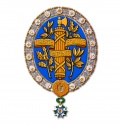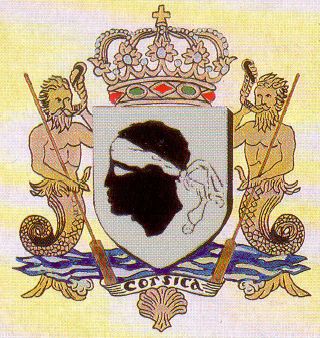Corse: Difference between revisions
Jump to navigation
Jump to search
Knorrepoes (talk | contribs) m (Text replacement - "/Arms of " to "/Arms (crest) of ") |
Knorrepoes (talk | contribs) m (Text replacement - "↵{{media}}" to " {{fr1}} {{media1}}") |
||
| Line 21: | Line 21: | ||
[[File:corse2.jpg|center]] | [[File:corse2.jpg|center]] | ||
{{ | {{fr1}} | ||
{{media1}} | |||
[[Civic Heraldry Literature - France|'''Literature''']]: Image taken from [http://www.gaso.fr La banque du blason] (with permission); background by Brian Timms; large picture from postcard. | [[Civic Heraldry Literature - France|'''Literature''']]: Image taken from [http://www.gaso.fr La banque du blason] (with permission); background by Brian Timms; large picture from postcard. | ||
Revision as of 12:25, 26 December 2022
French heraldry portal
This page is part of the French heraldry portal |
Heraldry of the World |
|
French heraldry:
Overseas territories:
|
Selected collector's items from France:
|
CORSE
Origin/meaning
The legend of the moor's head derives from the practice of cutting off the head of a defeated chieftain. This the Genoans did to Sampiero Corso. Pope Boniface VIII, in 1297, who was the lord of the island, gave Corse and Sardinia to Jaime II, King of Aragón. He then placed three moor's heads with bandages over their eyes in his Corsican arms. Sardinia bore four. They were shown sable for heraldic reasons and were not meant to represent negroes heads.
The large arms of Corse show two mermen as supporters:
Literature: Image taken from La banque du blason (with permission); background by Brian Timms; large picture from postcard.


